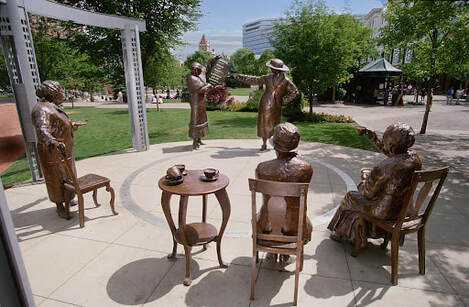 Women are Persons! Monument to the Famous Five in Ottawa, Ontario, Canada
Women are Persons! Monument to the Famous Five in Ottawa, Ontario, Canada On August 27, 1927, they petitioned the federal government to refer the issue of the eligibility of women to be senators to the Supreme Court of Canada. This petition was the foundation of the Persons Case, a leading constitutional decision. Although most Canadian women had the vote in federal elections and all provinces but Quebec by 1927, the case was part of a larger drive for political equality. This was the first step towards equality for women in Canada and was the start to the first wave of feminism.
The question the federal government posed to the Supreme Court was: "Does the word 'Persons' in Section 24 of the British North America Act, 1867, include female persons?" In 1928, the Supreme Court unanimously held that women were not "qualified persons" within the meaning of s. 24 of the British North America Act, 1867. The five women appealed that ruling to the Judicial Committee of the Privy Council, at that time the highest court of appeal in the British Empire. The women of the famous 5 collectively came together for the supreme court on March 14, 1928 to fight for women's status as "persons". This attempt failed and the court deemed women not qualified for this status. On October 18, 1929, the Judicial Committee of the Privy Council overruled the Supreme Court and held that women were "qualified persons" and eligible to be appointed to the Senate.
Some saw this as "radical change"; others saw it as a restoration of the original framing of the English constitutional documents, including the 1689 Bill of Rights, which uses only the term person, not the term man (or woman for that matter). Some others have interpreted the Privy Council rule as causing a change in the Canadian judicial approach to the Canadian constitution, an approach that has come to be known as the "living tree doctrine".
 RSS Feed
RSS Feed